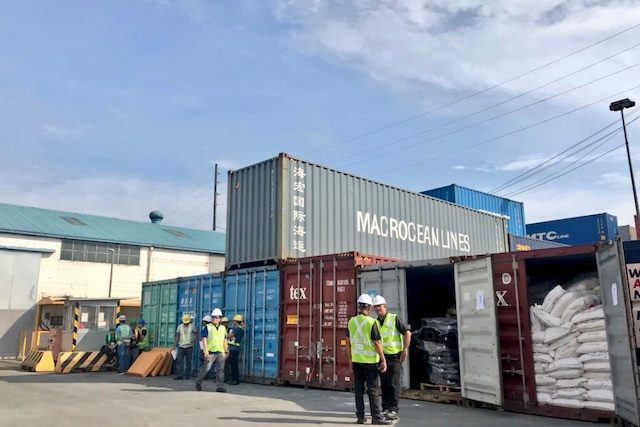SUMMARY
This is AI generated summarization, which may have errors. For context, always refer to the full article.

MANILA, Philippines – The National Economic and Development Authority (NEDA) appealed to government to “be bolder” in supporting the exports sector as the country’s trade balance swelled in October 2018.
The Philippine Statistics Authority (PSA) said the trade deficit in October 2018 widened by 62.9% at $4.212 billion, compared to the $2.585 billion in the same month last year. It is also larger than the $3.723 billion in September 2018.
“With export growth unlikely to pick up pace in the near term and imports to continue to expand, stronger support must be given to key and emerging exports sectors in the country,” Socioeconomic Planning Secretary Ernesto Pernia said.
Pernia also said there is a need to amend the Foreign Investment Act to allow foreign investments in domestic-market oriented firms, besides export-oriented enterprises.
“This will allow foreign firms to transfer their manufacturing facilities to the Philippines to take advantage of the growing domestic market – including the rising middle class – as well as to serve the Asian regional markets. We expect this move to reduce our imports and current account deficit, ease inflation, and create more and better jobs,” he added.
A trade deficit occurs when imports exceed exports, representing an outflow of the Philippine peso to foreign markets.
More imports amid a weak currency also entails more cost for the government.
The top 10 commodities imported in October were:
- Cereal and cereal preparations (52.3%)
- Mineral fuels, lubricants, and related materials (45.4%)
- Other food and live animals (33.6%)
- Telecommunication equipment (26.7%)
- Miscellaneous manufactured articles (25.4%)
- Plastics (24.9%)
- Industrial machinery (21.5%)
- Transport equipment (18.4%)
- Electronic products (14.8%)
- Iron and steel (7.8%)
Imports from January to October rose to $90.9 billion, higher by 16.8% from $77.9 billion a year ago.
China was the country’s biggest supplier of imports with a 20.6% share in October 2018. Import bills to China stood at $2.13 billion or an increase of 28.2% compared to October last year.
South Korea (10.4%), Japan (8.9%), the United States (7%), and Thailand (6.2%) round up the top 5 sources of imports.
Meanwhile, exports also grew but at a much slower pace in October at 3.3% – from $5.9 billion last year to $6.1 billion.
Year-to-date, exports contracted by 1.2% to $57.1 billion from $57.7 billion in the same period last year.
The wide trade gap comes as President Rodrigo Duterte signed Administrative Order No. 13, allowing the faster import of food and agricultural goods to combat high inflation. (READ: How high inflation exposed cracks in governance)
The worsening trade deficit was also registered during the government’s infrastructure push, with construction materials being bought abroad. – Rappler.com
Add a comment
How does this make you feel?
There are no comments yet. Add your comment to start the conversation.